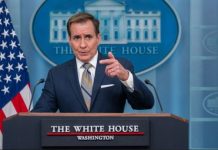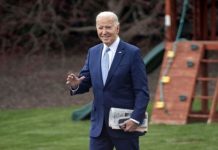May 28 (UPI) — Modernization and replacement programs for the United States’ nuclear weapons are going to be a priority for the Departments of Defense and Energy in 2018, according to House testimony by officials. The Navy and Air Force will be primary recipients of the program.
Frank Klotz, administrator of the National Nuclear Security Administration, testified Thursday before the House Armed Services Strategic Force Subcommittee, saying that $13.9 billion — half of the Department of Energy’s 2018 budget — will be allocated to nuclear weapon modernization. This would be $1 billion more than was spent in fiscal year 2017.
“We’re very grateful for the level of spending that has been proposed in the president’s [fiscal 2018] budget. It will allow us to tackle some of our very important infrastructure recapitalization projects, such as the uranium processing facility at Y-12 in Oak Ridge, Tennessee,” Klotz said.
“We expect to complete design this year and actually start construction next year We didn’t get into the situation we face with aging and in some cases crumbling infrastructure overnight, and we’re not going to get out of it in a day,” Klotz said.
The proposed budget would increase the nuclear budget by 10.8 percent to $10.2 billion, increase the Naval nuclear reactors program by 4.2 percent to $1.5 billion, and increase funding for federal salaries for employees involved in the program by 8.1 percent to $418 million. The funding for nuclear nonproliferation programs would remain unchanged from 2017 at $1.8 billion.
The only real deterrent from nuclear attack on the U.S. and its allies is a modern nuclear weapons arsenal, Dr. Rob Soofer, deputy secretary of defense, testified to Congress. This includes, he said, “strategy, forces and posture also must be flexible enough to maintain stability while adjusting to gradual and rapid technological and geopolitical changes.”
Soofer also said that a comprehensive Nuclear Posture Review has been ordered by President Donald Trump that will be completed by the end of the year to determine what additional changes need to be made to the U.S. nuclear force.
“Fiscal constraints, while posing planning challenges, do not alter the national security landscape or the intent of competitors and adversaries,” said Air Force Global Strike Command Air Gen. Robin Rand. “Nor do they diminish the enduring value of long-range strategic forces to our nation.”
Recapitalization costs for the U.S. nuclear program is expected to run between $230 billion and $290 billion over the next several decades, Soofer said.
Navy Strategic Systems Programs Commander Vice Adm. Terry Benedict said at the hearing, “While our current life-extension efforts will sustain the D-5 [Trident submarine-launched ballistic missile] system until the 2040s, the Navy is already beginning to evaluate options to maintain a credible and effective strategic weapon system to the end of the Columbia class service life in the 2080s.”
The U.S. stockpile of nuclear warheads dates back to the Cold War, though it has been maintained under the Enduring Stockpile program. It forms a triad of air-launched, sea-launched, and land-based munitions to ensure against an enemy first strike. It is primarily a deterrent against the nuclear forces of Russia and China.






